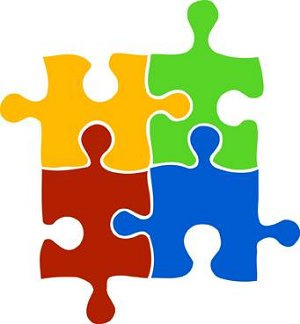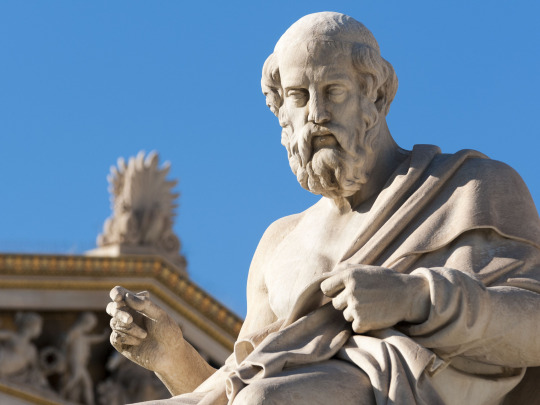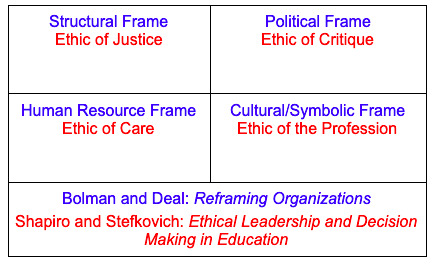#what i've noticed in people is the opposite move to the critique i read -- love for something initially that tempers and modulates with tim
Explore tagged Tumblr posts
Text
The Fantastic Four to the Fourth Power, Part 2 -- My Crucible Experience
I've recently finished Doris Kearns Goodwin's excellent book, Leadership in Turbulent Times, in which she details the ways in which four US presidents served as leaders through pivotal historical moments. As I wrote in my previous post, there were commonalities among the four presidents in the ways they led during critical times. I enjoyed learning about those turbulent times, yes, but I also really enjoyed part two of the book, in which Goodwin describes how each president, earlier in their lives, underwent a “crucible” moment, a transformative experience that was instrumental in shaping the identities of the leaders they would become. The ways in which each president transformed themselves was both intriguing and highlighted the differences among them. Reflecting on those differences and on my own experiences has led me to an interesting idea. Let me explain.

My own crucible experience was not brought on by loss, as was the case for our presidents, to whom I promise to return. In the summer of 2016, I traveled to Bethlehem, Pennsylvania, as part of the Lehigh University Global Distance Program. I had been teaching overseas for over ten years, and was interested in moving into school leadership. Lehigh had (and has) the best program for international teachers to earn their MEds through a hybrid program, some courses online, some face-to-face. I had been teaching in Panama for a year, and had taken courses via Zoom already. But that summer I packed a bag, said goodbye to my wife and one-year-old son, and lived in a dorm for five weeks with a bunch of other international teachers, leaders, and counselors, while I took three educational leadership courses. I dove into the experience as much as I could -- reading every additional article that was assigned, organizing social outings with my peers (Go Lehigh Valley Iron Pigs!), and learning as much as I could. The three courses, Organizational Leadership and Change Management, School Law, and Diversity and Multicultural Understanding, all unlocked within me a greater knowledge about my career as an educator and my life in general than I ever thought possible. I was so fortunate to have the experiences I did, and gain the insights that I did, that I returned with a passion to collaborate, serve, and lead, that I simply hadn’t had before. It was truly transformational. I think of my career before that summer and after.

The first course I took led me to an insight that, when I had it, must have seemed obvious to my outstanding professor, Dr. George White. We were studying Bolman and Deal’s Reframing Organizations, in which the authors describe the four frames of organizational leadership: structural, human resources, political, and cultural/symbolic. It’s a fantastic book, and George brought the text to life in a way that few teachers have ever brought a book to life. Because these frames are important to the rest of these blog posts I want to take a minute to review them. The structural frame involves order. Timetables, roles and responsibilities, hierarchies, logistics. Important in the structural frame are things like job titles and job descriptions. As my partner principal Brian would describe it, the structural frame is the “systems and structures” frame. George professes that he himself is not a systems and structures guy, but he understands the importance of viewing the organization through that frame. The second frame is human resources. Essentially this is about caring for your colleagues, and attending to their needs. A leader viewing things from the HR frame wants to help empower her or his staff and help them grow. The political frame was described by George as essentially Game of Thrones. A battle for survival. The battle was over important resources: people, time, space, and funds. In order to succeed in viewing the organization through this frame a leader has to be a politician. As Heifetz and Linsky would say, use allies well, keep the opposition close, and court the uncommitted. Political savviness is a vital part of leadership (and an area in which I still have lots of room for growth). The final frame is the cultural/symbolic frame. This has to do with the story of the organization; its rituals and traditions. A leader who understands how to view things through this frame knows the symbolic importance of certain members of the organization who maintain those traditions, and how important it is to frame the narrative well with respect for the past along with progress toward the future. Story matters, as all of our presidents found out. The trick, and the tricky part, is to be able to balance the four frames, so that as a leader you are not viewing the organization too much from any one frame, and also that you aren’t neglecting any frames.

This was a phenomenal lesson to learn, and one I have found helpful as I analyze leadership challenges we face at our school. But George wasn’t done there. We also focused on change management in the course, and spent some time discussing Shapiro and Stefkovich’s work, Ethical Leadership and Decision Making in Education. These authors describe four foundations for ethical decision making. As a student of philosophy, I’m all in for any discussion of ethics. In fact, fifteen years previously, I took a graduate course called Foundations of Ethics through the BC Philosophy department, where Professor Patrick Byrne described his love for “Bernie and the Two Janes,” or Bernard Lonergan, the Jesuit theologian, Jane Austen, the author, and Jane Jacobs, the sociologist. I love Lonergan and Jane Austen too. I mention them briefly because I feel my life’s work is devoted to understanding how Lonergan’s philosophy applies to educational leadership, and because Jane Austen is JK Rowling’s favorite author. Later in this post we will finally get to a discussion of Harry Potter! But for now, ethical foundations.

Shapiro and Stefkovich describe four ethical foundations for decision making: the ethic of justice, ethic of care, ethic of critique, and the ethic of the profession. A better summary than mine can be found here, but I’ll give it a try. The ethic of justice is exactly what it sounds like: making decisions based on a sense of fairness, equality, equity, respect. Legality matters to those who make decisions based on the ethic of justice. The questions that drive those who make decisions based on the ethic of justice are WHAT and HOW. Essentially this is Plato in The Republic, meditating on what justice really is. The ethic of care involves being empathetic toward others. There is a lot of great work happening now in education regarding compassion and dignity, and treating everyone with both. This work arises from an ethic of care. The question that drives the ethic of care is FOR WHOM, and it arose out of the work of the feminist Carol Gilligan. The ethic of critique asks the question WHO. As in who benefits from the way things are being done now? Who made the decisions? Notice the difference between the subjective ‘who’ and the objective ‘whom’ in the ethics of critique and care, which is one of my favorite grammar lessons to teach, and says everything to me about both of those foundations for decision making. One of my undergraduate courses was Philosophy of Education, in which I was introduced to Paulo Freire, and the ethic of critique fits his ideas in Pedagogy of the Oppressed. The ethic of critique is about power, who has it and who wields it, and also asks, “is that right?” Finally, the ethic of the profession is specific to the context. Similar to the hippocratic oath for medical professionals of “do no harm,” educators have a responsibility to those they profess to educate. This ethic comes down to the fundamental question of WHY we do what we do in this profession. As I wrote in the last post, if we don’t understand our WHY as educators, if we’ve lost our purpose, Baruti Kafele will rightly tell us we should just get out of the profession. It’s about us as educators evaluating our own decision-making values in light of the fact that we are all here to serve our students and their learning.

So this is all well and good, but I don’t mean to just write book report after book report. I want to make a point. And what I pondered in that course five summers ago with Dr. White was the simple notion that there are four frames of organizational leadership and there are four foundations for ethical decision making. Four. Four of them. Four of each. Why four? Is there some significance here? And then it hit me. The four frames align PERFECTLY with the four foundations for ethical decision making.
The structural frame is about order, systems, structures. In a sense, it is about fairness. It IS the lens through which the ethic of justice is viewed.
The human resource frame is about compassion, empathy, meeting our staff’s needs. It IS the lens through which the ethic of care is viewed.
The political frame is all about utilizing power to exert influence and gain control over time, people, space, and financial resources. It’s about control, and who is controlling. The ethic of critique is finely attuned to understanding this frame, as it asks who is exerting power.
Finally, the symbolic/cultural frame has everything to do with the story of the organization, with its purpose, with its WHY. Therefore, those who base decisions on the ethic of the profession are inherently interested in the important symbolic nature of what they do.
To illustrate this further I’ll start this small table:

So as I was thinking about this, and wondering not only if this made sense, but also if this mattered at all, I started seeing other sets of four arise in educational literature, leadership literature, and self-knowledge literature. Fours are EVERYWHERE. Those fours started really turning the wheels in my mind, thinking about not only ways to organize and think about what we do, how we do it, who we are, and why we do it, but also how those organizational frameworks can help us better understand how to do it better. These connections will continue to be the subjects of future posts.
Of course, I also thought of some pop culture sets of four: The Fantastic Four and the Beatles came immediately to mind. But what really struck me were the four houses in Hogwarts: Slytherin, Hufflepuff, Gryffindor, and Ravenclaw. How THESE align with the four frames and the four ethical foundations is the subject of my next post. Thanks again for reading!
0 notes